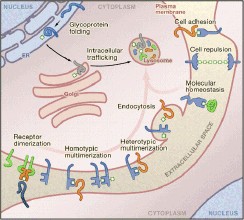Cell metabolisms is usually defined as a collection of intracellular and membrane small molecule metabolites. Metabolite, which reflects the approximate concentration of an organ, tissue or cell phenotype, is involved in a variety of changes in intracellular processes. Cell metabolisms, a new field, can solve basic biology problems and allow to monitor intracellular metabolic phenomena. This post is going to introduce the tips for preparing samples of cellular metabolism.
The following method is used to detect LC/MS & GC/MS with cell metabolisms approach.
Preparation
Glass tubes (with caps):
1. Tube/per sample
2. Vials (with cap): 2 vials/per sample(a loaded medium, a loaded cell supernatant after crushing)
3. 15 ml centrifuge tube: 2 tubes/a poor state of each cell sample(a broth loaded, a loaded PBS wash)
4. 1.5 ml centrifuge tubes: 1 tube/per sample(sample with broth, if the medium does not need to do testing, you cannot do this)
5. 2.0ml tubes
Cell disruption and extraction of metabolites:
1.Taking out the dish from the incubator, observing cell state with the microscope.
(1) Cell status is not bad;
(2) cells, not-firmly-attached to the wall, have bad states with more suspension.
2. Collection of cells, which is not attached to the wall firmly:
(1) 1ml pipette is adjusted to 750μL, taking 1.5 ml culture medium into EP tube, discarding the remaining broth (if broth does not be used in metabolisms detection, this step may be omitted);
(2)using the original culture medium to pipet cells, in order to remove the not-firmly-attached cells, and then collecting all the broth to 15ml centrifuge tube, centrifugation, putting 1.5 ml culture medium in EP tube, discarding the remaining broth (if broth does not used in metabolisms detection), retenting cells obtained by centrifugation (line 1).
3. Collecting not-firmly-attached cells:
(1) washing cells with PBS, in order to remove the residual liquid in a dish: 1ml once, and washing for six times to be colorless. Lotion should be reserved to another tube (tube 2), centrifugation, cells are retained;
(2) adding 1ml PBS solution to the dish, spreading evenly. Cells were scraped with a cell scraper, and scraping to the same position, draw cell suspension into a glass centrifuge tube (tube 3); using another 0.5ml PBS solution to rinse residual cells in the dish. And ensuring all cells centrifugation tube to obtain 1.5ml cell suspension in a glass testing tube (tube 3).
(3) collecting cell groups from tube 1 and tube 2 using tube 3 in 1.5ml suspension.
(4) the mixture is transferred to 2ml centrifuge tube, centrifuged, the cells should be retained.
These are the main steps of collection of cells and culture fluid samples.
Related product and service:
Cellular Metabolism
LC/MS
